Lemurs
At the Little Rock Zoo, we’re home to a vibrant community of lemurs, including Ring-Tailed Lemurs and Blue-Eyed Black Lemurs. Lemurs are unique primates found only on the island of Madagascar, known for their diverse appearances and fascinating behaviors. Our lemurs delight visitors with their playful antics and social interactions, providing an up-close opportunity to observe these captivating creatures. As ambassadors for their species, our lemurs also help us raise awareness about the importance of lemur conservation and the threats they face in the wild, such as habitat loss and fragmentation.
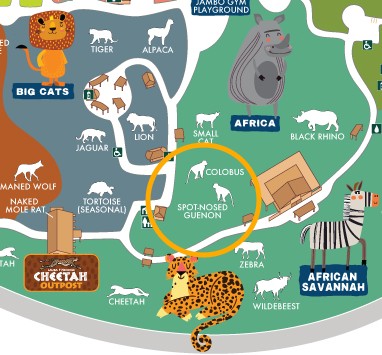
Where are the Lemurs? The lemurs are the only animals impacted by the ongoing construction project happening at the Zoo’s front entrance. They’ve been temporarily moved to the same building as the Colobus Monkeys and rotate through the exhibit separately.
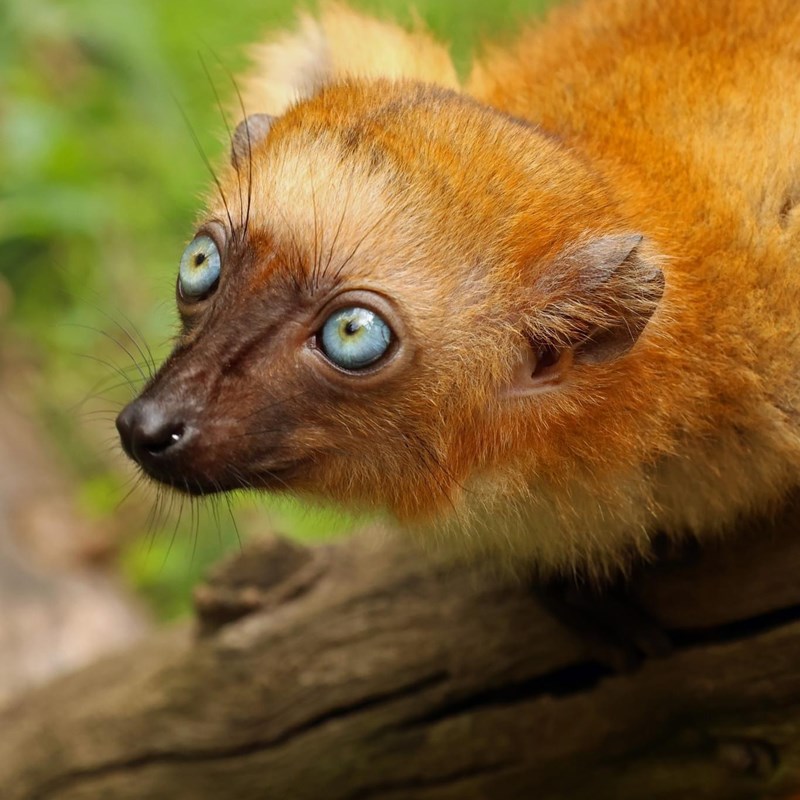
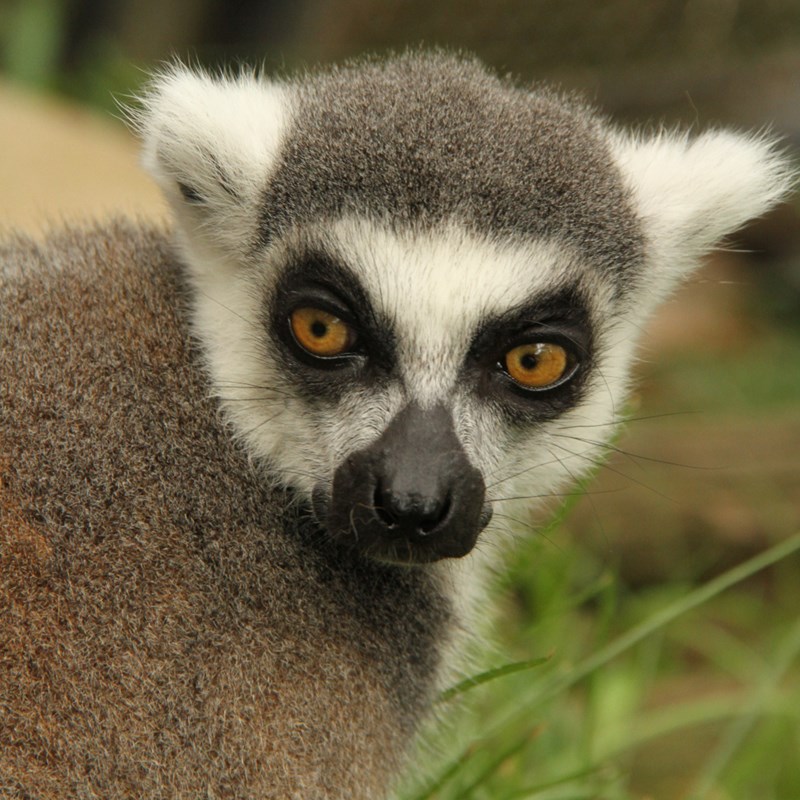
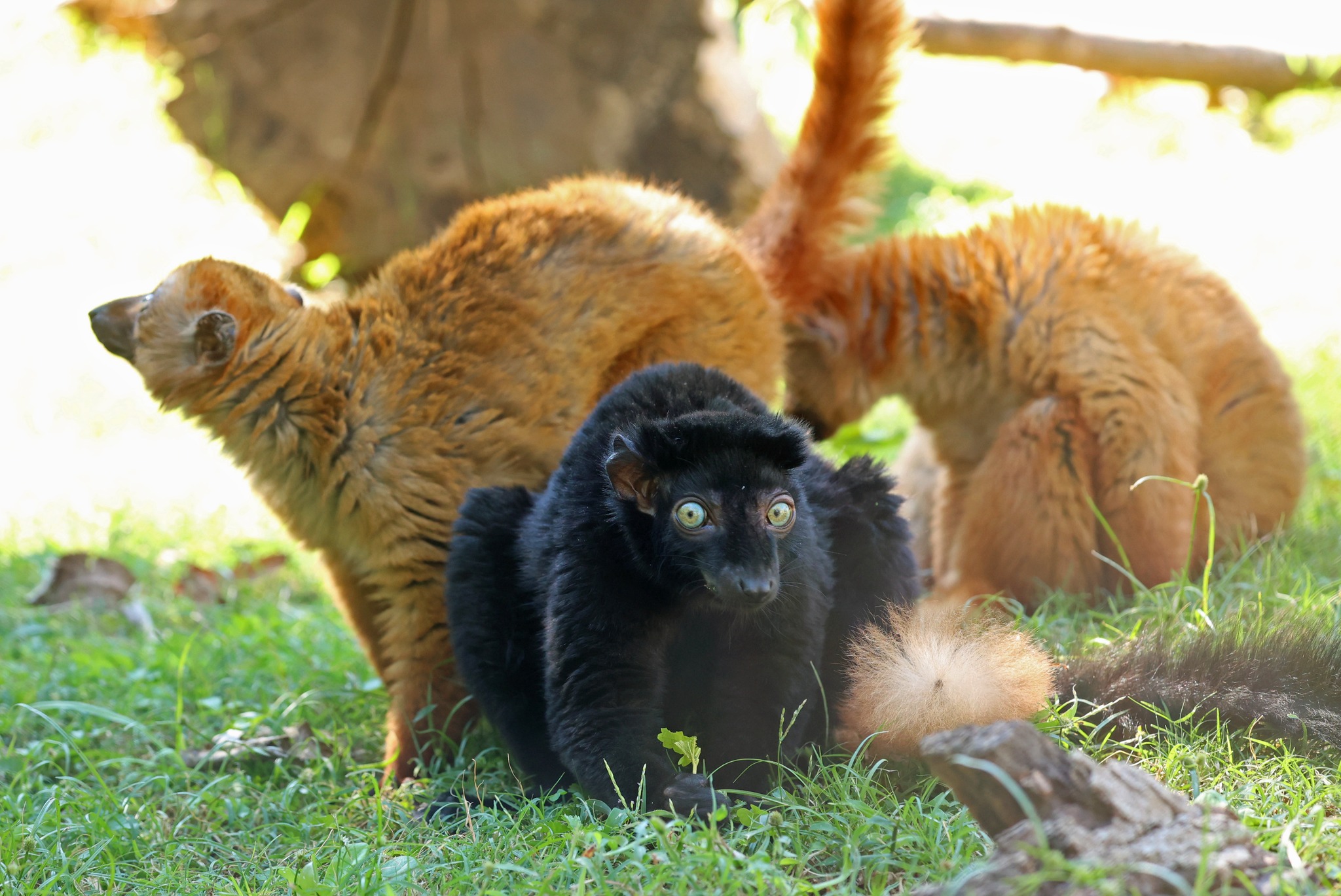
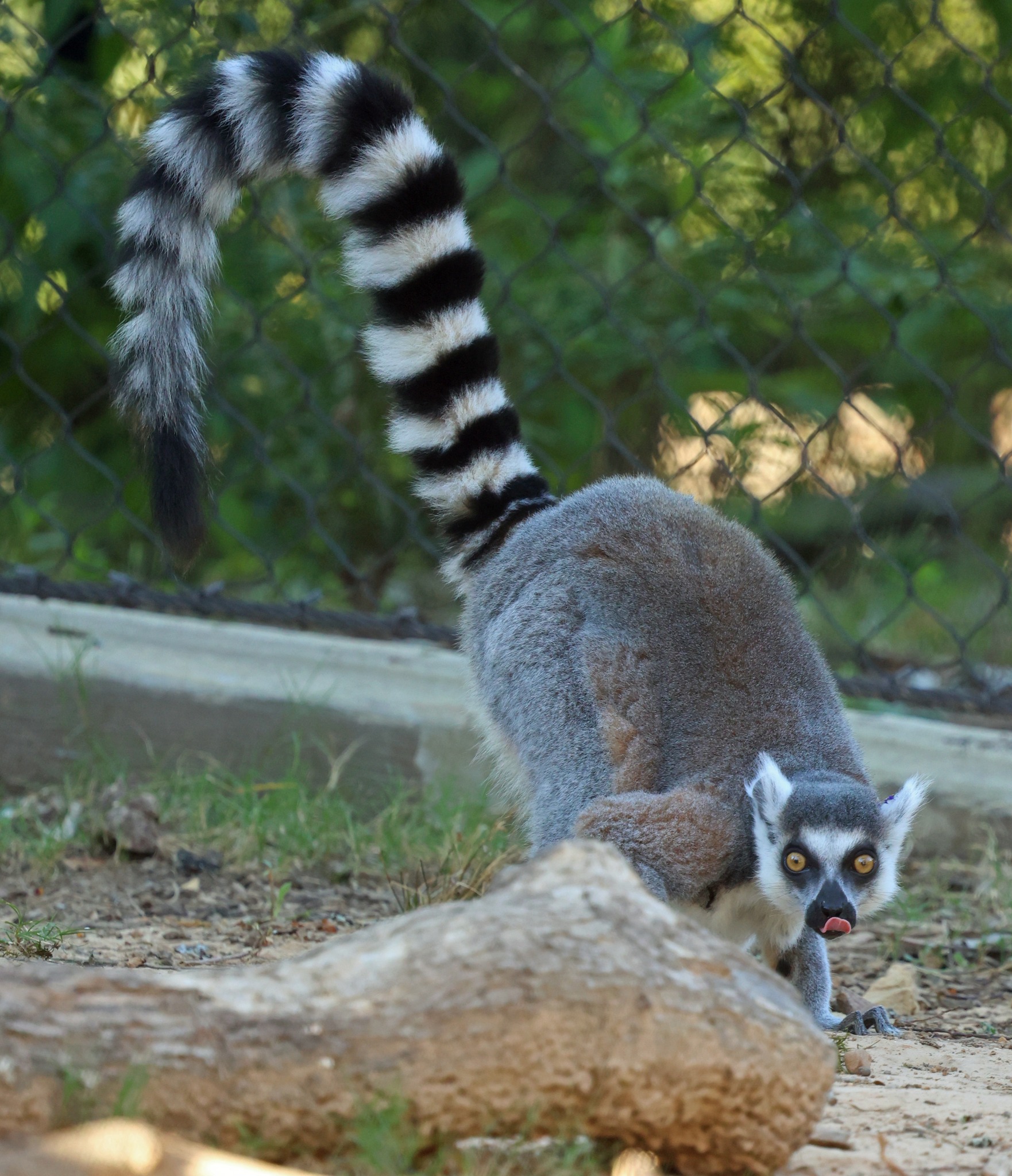
CRITICALLY ENDANGERED
Ring-Tailed Lemurs
At the Little Rock Zoo, our Ring-Tailed Lemurs are among our most beloved residents. These charismatic primates, known for their striking black-and-white striped tails, are native to the island of Madagascar. Our Ring-Tailed Lemurs live in a social group, exhibiting complex behaviors and strong social bonds. Visitors to the zoo can observe them as they forage for food, bask in the sunlight, and engage in playful interactions with one another.
- The ring tailed lemur’s tail is longer than its body!
- Male ring tailed lemurs put smells, from glands in their bottoms, on their tail and wave it at rivals. It’s known as ‘stink fighting’!
- The ring tailed lemur is used as a symbol for Madagascar and for endangered animals on the island, because it’s so well-known.
- The ring tailed lemur is known as ‘maky’ in Malagasy, the language spoken on Madagascar.
- The ring tailed lemur’s Latin name is ‘catta’ because of its cat-like looks.
CRITICALLY ENDANGERED
Blue-Eyed Black Lemurs
Blue-Eyed Black Lemurs, native exclusively to the island of Madagascar. These lemurs are known for their striking appearance, featuring jet-black fur and mesmerizing blue eyes. Endemic to the Sambirano region of Madagascar, Blue-Eyed Black Lemurs primarily inhabit dense tropical rainforests, where they play a vital role in seed dispersal and forest regeneration.
- Unlike most primates, males and females are different colors.
- Males are completely black
- Females are reddish brown or blonde
- Both sexes have blue or blue-grey eyes
- Black lemurs exchange greetings through reciprocal fur grooming.
Photos by Karen Caster



